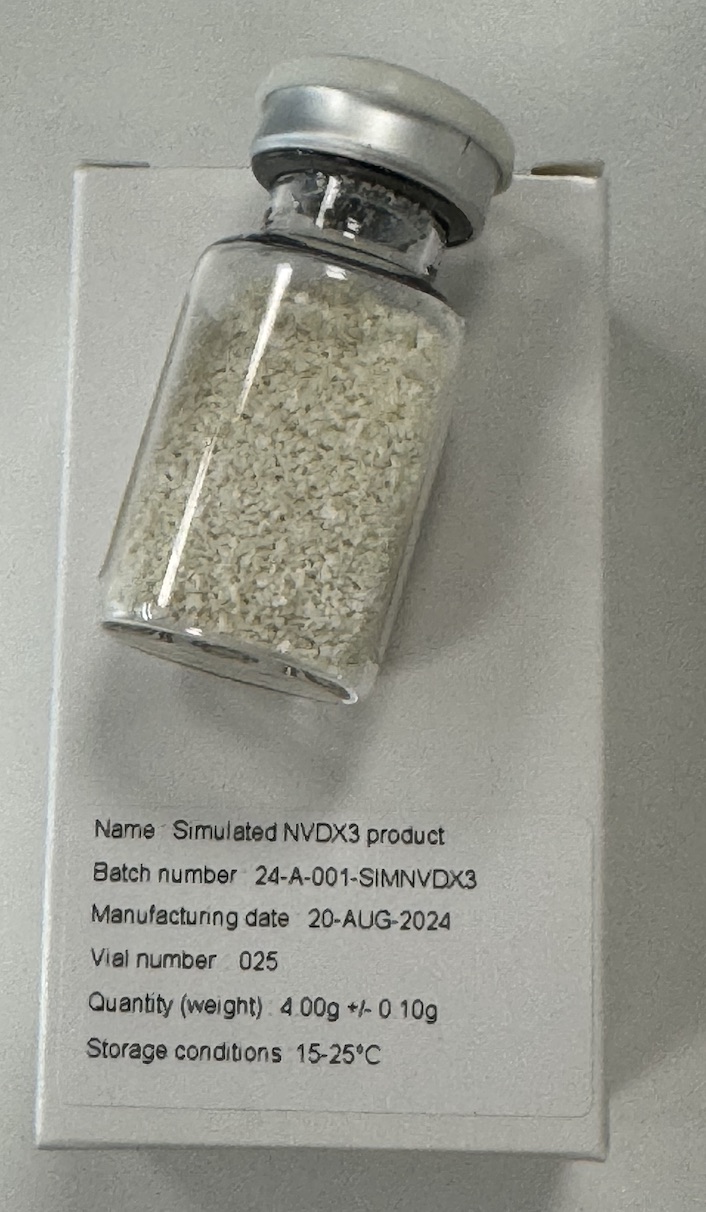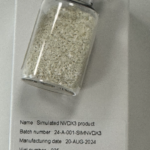Share this post:

- NVDX3 elicited bone formation as early as 12 weeks and functional fusion by 26 weeks in ovine posterolateral fusion (PLF) model
- In phase 1b/2a clinical trial, early bone fusion was observed at 12 months, coupled with no NVDX3-related adverse events, in patients who had single-level lumbar spine fusion
- Phase 2b/3 trial in level two cervical spine fusion planned for November 2025
- NVDX3 has potential to become new on-label standard for use in spine fusion
Mont Saint-Guibert, Belgium, April 22, 2025 – Novadip Biosciences, a late-stage clinical biotechnology company specializing in regenerative medicine, today announces positive results from its NVDX3 program, an allogenic bone grafting material created from human osteogenic adipose tissue-derived mesenchymal stem cells (ASCs).
NVDX3 performed well in an animal model with supportive nonclinical data in spine fusion
In an ovine instrumented PLF model, which provides good translatability to the human spine, NVDX3-implanted animals exhibited higher rates of fusion in CT scans or palpation at 12 weeks compared to an autograft. 88% of NVDX3 animals showed moderate-complete fusion at the 12-week terminal endpoint. At 26 weeks, NVDX3 implantation and autograft produced similar rates of complete fusion (83% vs. 89% by palpation, respectively, and complete fusion in both groups on microCT). Histopathology and biomechanical testing confirmed the ability of NVDX3 to promote effective biological integration and progressive bone remodeling.
“In this model, an autologous bone graft is the most challenging control one could choose to try and demonstrate a similar or higher rate of spine fusion,” said Dr Jeremiah Easley, Associate Professor, Colorado State University. “I wasn’t expecting a product without osteogenic capacity to perform as well as an autologous graft with active cells.”
Interim results from phase 1b/2a show good safety profile
The interim 12-month safety results from an ongoing phase 1b/2a proof-of-concept study of NVDX3 in lumbar spine fusion indicate a good safety profile. In the NVDX3-CLN02 (NCT05961956) single-arm, open-label clinical trial aimed at evaluating the safety and preliminary efficacy of NVDX3, five adults, age 57-74, with symptomatic disc disease affecting one level of their lumbar spine were enrolled. Using a transforaminal interbody fusion (TLIF) approach, all participants were treated with NVDX3 with safety follow-ups scheduled at 4, 6, 12, 18 and 24 months. At the 12-month follow-up visit, clinical benefits (reduction of pain) with early signs of bone fusion have been reported, with no adverse events related to NVDX3.
“Together with the previously reported results from the first-in-human trial in traumatic fractures, the safety profile of NVDX3 is looking promising,” said Dr. Judy Ashworth, Chief Medical Officer at Novadip. “A clean safety profile is particularly critical in spine surgery. Having an efficacious product in a single formulation that is safe for use across all types of spine fusion procedures has the potential to be a real gamechanger.”
“Given the good safety and efficacy NVDX3 demonstrated in the ovine PFL model, which is a very challenging model to test the safety of an allogenic product, I’m not surprised to see such a good safety profile in humans,” said Denis Dufrane, MD, PhD, CEO of Novadip Biosciences. “Throughout the nonclinical and clinical development of NVDX3, there have been no signs of immunogenicity or ectopic bone formation, reinforcing the safety profile of our product and its potential as a transformative therapeutic option, especially in patients with comorbidities who need a physiological boost to achieve bone union.”
Novadip previously reported final safety and preliminary efficacy results of NVDX3 as a bone graft to treat distal radius fractures in its NVDX3-CL01 (NCT05987033) trial, demonstrating excellent safety and efficacy at 12 months post grafting surgery. In November 2024, Novadip launched an Investigational New Drug (IND) study for NVDX3 and is currently at the start-up stage of a phase 2b/3 trial in the US in level two cervical spine fusion. Novadip aims to begin patient enrollment in November 2025.
About NVDX3
Originating from Novadip’s 3M3 platform, NVDX3 is an allogenic bone grafting material created from human osteogenic adipose tissue-derived mesenchymal stem cells (ASCs). It is formulated as a lyophilized powder intended to be used as an ‘off-the-shelf’ implant to induce bone formation between two bone segments in both orthotopic and heterotopic environments.
NVDX3 is a new class of regenerative tissue products that accelerates bone healing in a single treatment for patients at high risk of nonunion due to comorbidities (ageing, diabetes, obesity, smoking and other conditions) and medication use.
About Novadip Biosciences
Novadip is a late-stage clinical biotech company aiming at advancing the standard of care for patients undergoing bone and tissue regenerative treatment.
Based on the scientific discoveries of founder Prof. Dr. Denis Dufrane, MD, PhD, and research from UCLouvain and St. Luc University Hospital, the company is developing its unique 3M³ tissue regeneration technology platform, designed to create a new class of regenerative tissue products that accelerate the healing of large bone defects, bone nonunion and spine fusion in a single treatment, for patients with limited or no treatment options.
Novadip’s pipeline includes two lead products: NVD003, an autologous cell-based therapy currently in phase 1b/2a clinical trials in adults with bone nonunion, and pediatric congenital pseudarthrosis of the tibia; and NVDX3, an allogenic bone grafting material currently in phase 1b/2a trials in trauma surgery and lumbar intervertebral spine fusion. Novadip is ready to start two phase 3 trials for NVD003 in the US and EU, and the FDA has granted approval to start a phase 2b/3 IND (Investigational New Drug) trial with NVDX3 in level two cervical spine fusion.
Founded in 2013 in Belgium, Novadip employs 45 staff. Since inception, it has raised
€88 million in equity and non-dilutive funding. The company targets a total addressable market of $13.5 billion (€13.06bn).
To download documents, you can right-click on the links above and chose « Save link as… »



